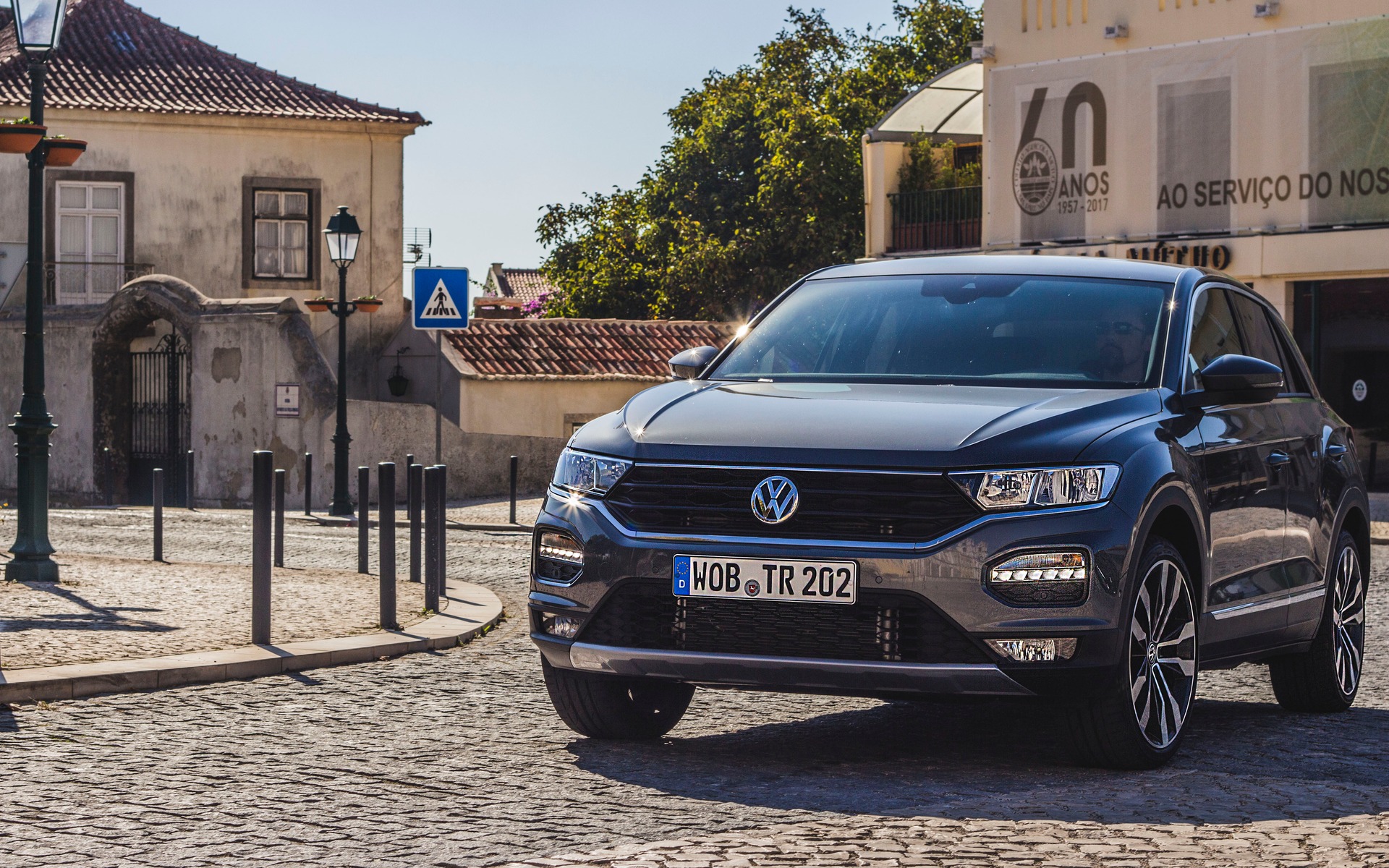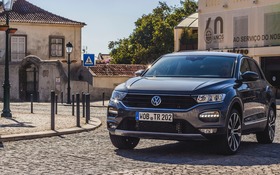2018 Volkswagen T-Roc: We're Not Asking Loud Enough
My first drive of the 2018 Volkswagen T-Roc in Portugal was without question one of the oddest press trips I’ve had the privilege to be invited to this year. After a 10-hour flight, a leg in Germany and a five-hour time change, I stayed there for only one day to drive a vehicle we won’t even get in Canada. Did I miss a bit of vital information on the way there?
Actually, the real reason Volkswagen Canada invited us to European soil is because the carmaker sees a potential for the T-Roc in North America. With increasingly aggressive competition in the subcompact crossover segment such as the Honda HR-V, Mazda CX-3, Toyota C-HR, Nissan Qashqai and others, it would only be a question of time before Volkswagen, who’s currently in the process of unleashing an SUV offense with the Atlas and Tiguan, imports its latest creation to North American dealerships. As Thomas Tetzlaff, public relations manager at Volkswagen Canada so eloquently put it: “I see no reason why we shouldn’t get this thing back home.” So, why are we deprived from it?
- Also: We’re Heading to Portugal to Drive the 2018 Volkswagen T-Roc!
- Also: Volkswagen T-Roc: A New Player in the Subcompact SUV Market?

A Big Golf
Before getting into the economic details that explain why we won’t be getting the T-Roc, at least for now, allow me to first tell you a bit more about the vehicle itself. The T-Roc is a subcompact sport utility vehicle that’s positioned below the Tiguan in Volkswagen’s lineup. It sits on the MQB platform, the same one that also underpins the Golf.
For the European market, up to six engines are offered; three of which are gasoline-powered, and three diesels. Over 20 different colours are available. As a matter of fact, the T-Roc is aimed directly at the millennial generation. It is therefore entirely customizable, with contrasting or identical interior colours to the exterior. There are up to 80 different available combinations!
All three petrol engines are turbocharged, but of different displacement. Consumers can choose between 1.0-, 1.5- or 2.0-litre engine sizes. The 2.0-litre four cylinder in question is same one found in the Tiguan and the Atlas. For the T-Roc, it pumps out 190 horsepower and 236 lb.-ft. of torque.
According to Volkswagen Canada, if the T-Roc was to one day cross over to this side of the pond, it would most probably be powered by the 2.0-litre turbo. That’s why we favoured it over the other trim levels for our test drive. Our T-Roc was also fitted with Volkswagen’s 4MOTION all-wheel-drive system, as well as the all-new seven-speed DSG dual-clutch automatic. Entry-level T-Rocs come standard with front-wheel drive and a six-speed manual transmission.
On Portugal’s narrow and sinuous roads, the T-Roc proved to be nimble, rock solid, well planted and immensely fun to drive. The fact that it’s built on the Golf’s underpinnings gives it similar driving dynamics. Never did I feel like I was driving a sport utility vehicle. In fact, the T-Roc handles more like a hot hatchback. However, its suspension remains firm, like in the Atlas and TIguan. I guess that’s the price to pay for a sporty ride. But since SUV buyers prefer comfort and daily drivability over performance, the stiff ride might turn some potential buyers off.
The 2.0-litre remains a solid performer, without being extraordinary. There’s ample low-end grunt, making it ideal for overtaking or sprinting up steep inclines. This mill does lack sound and character though. Fuel consumption is competitive; we observed a 7 L/100 km average during our drive.
As for the automatic gearbox, it’s excellent, typical of recent Volkswagen products. It downshifts quickly and operates in utter smoothness. Put it in Sport mode, and it keeps the revs up, allowing you to extract the most out of the engine.

For the rest, the T-Roc is a well-put-together, attractive and quiet little crossover. Its interior is young and stylish, especially with its contrasting colours. Our tester was equipped with all the latest semi-autonomous driving aids such as adaptive cruise control and lane keep assist, a system which proved itself almost faultless on the roads of Lisbon. The eight-inch infotainment system comes standard with Android Auto and Apple CarPlay. I was however disappointed to have to start the car with a physical key. I also never spotted a backup camera while in reverse. In 2018, that’s unacceptable.
In terms of passenger and cargo space, interior dimensions are relatively similar to the Golf, which gives the T-Roc plenty of front passenger head and leg room. Rear-seat leg clearance is a tad on the cramped side, but headroom is ample. Trunk space is rated at 445 litres with all seats lifted up.
The Golf Effect
So, let’s get back to the reasons why we’re not getting this thing. Trust me, I did everything in my power to extract all the information I could, and Mr. Tetzlaff, who was with me during the entire trip, shared all of his knowledge. There are two good reasons that prevent the T-Roc from being sold here.
The first is the Golf. Volkswagen fears that the T-Roc will, and this was their term, “cannibalize” Golf SportWagen Alltrack sales in North America. Remember, we, unlike Europeans, are addicted to SUVs, and that little wagon, which was released last year, is desperately trying to convince consumers that they don’t need a utility vehicle to be happy in life. If it were sold next to the T-Roc, it would risk total annihilation.
But the most important reason for its forbidden fruitiness is the location where the T-Roc is built: Portugal. Importing it the same way it is currently sold in Europe would considerably inflate its price tag, making it more expensive than the Tiguan. If Volkswagen wants to sell its little one here, it would have to adapt one of its North American assembly plants, like Tennessee or Mexico, which implies heavy investment. Before getting into such an endeavour, a carmaker must first evaluate if a vehicle will be successful in the target market, and that’s a lot harder to determine than we may think.
That being said, Volkswagen claims that a vehicle based on the T-Roc is in the works for our market for the 2019 model year. That vehicle will be sold under a different name, and will probably look entirely different. This essentially means Volkswagen is currently buying time to allow the SportWagen and the Tiguan to gestate. Nevertheless, we were also informed that if a significant interest in the T-Roc were manifested by North American consumers, Volkswagen would do what it takes to ship it over here earlier than expected. You know what that means right? That we’re not asking loud enough.












